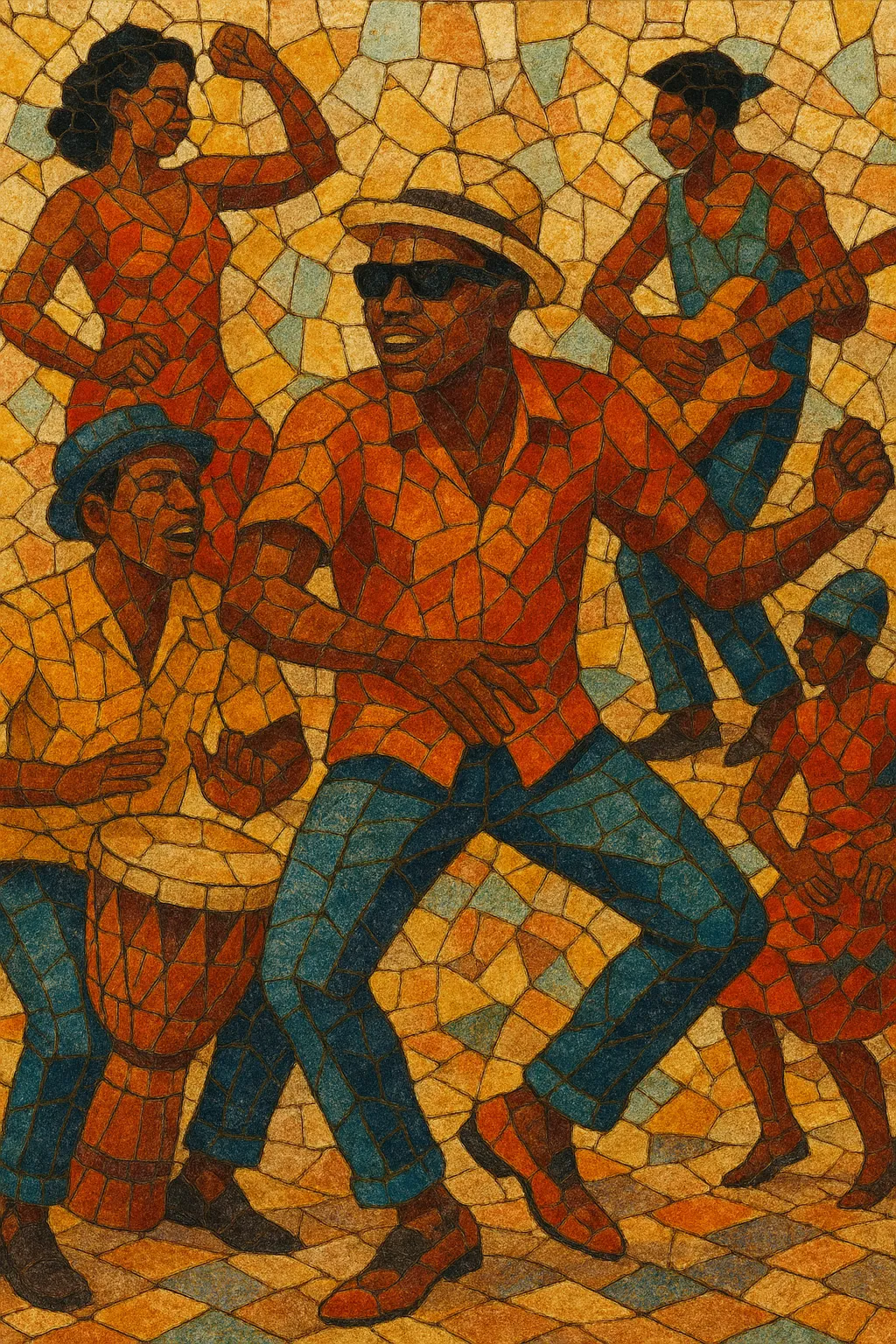
Coupé-décalé is an Ivorian dance music movement known for punchy, uptempo drum programming, shouted slogans, and call-and-response vocals built around simple, catchy synth hooks. Tracks emphasize percussive drive and named dance moves, designed for rapid audience participation on the dancefloor.
The style blends Congolese soukous/ndombolo showmanship (atalaku-style shouts) with Ivorian zouglou’s communal energy, Caribbean zouk smoothness, and dancehall’s club-oriented punch. Its aesthetic centers on exuberance, swagger, and celebration—often accompanied by choreographies and fashion statements that project success and joie de vivre.
Coupé-décalé emerged in the early 2000s among the Ivorian diaspora in Paris, led by the “Jet Set” collective fronted by Douk Saga (Stéphane Doukouré). The name—roughly “to cheat/cut and run”—captured a brash, stylish ethos of outsmarting adversity. Early hits like “Sagacité” codified the formula: hard-driving percussion, shouted catchphrases, and dances that could be learned immediately on the floor.
Amid political tensions and civil conflict in Côte d’Ivoire, coupé-décalé offered escapist optimism and communal release. The genre rapidly spread from Paris clubs to Abidjan’s maquis (bars), where DJs, MCs, and dancers introduced waves of named steps and “concepts.” Atalaku-style shoutouts—praising patrons and hyping the crowd—became a signature, borrowing the vocal hype tradition from Congolese ndombolo/soukous.
From mid-2000s through the 2010s, artists such as DJ Arafat, Debordo Leekunfa, Serge Beynaud, Bebi Philip, and others modernized the sound with sleeker synths, tighter drum programming, and viral dances. DJ Arafat, in particular, helped globalize the style via the internet and francophone networks, cementing coupé-décalé as a dominant West/Central African club sound.
The genre evolved with digital production, drawing on EDM-influenced sound design while retaining its core: anthemic hooks, kinetic rhythms, and participatory dances. It cross-pollinated with pan-African pop and French urban scenes, feeding into newer waves like Afrobeats and Afro-trap, while remaining a core pillar of Ivorian popular culture.
Coupé-décalé’s identity is inseparable from dance crazes (“concepts”) and performance flair—fashion-forward looks, synchronized routines, and crowd interaction. Tracks often instruct or name the moves, making the dancefloor both the medium and message.

